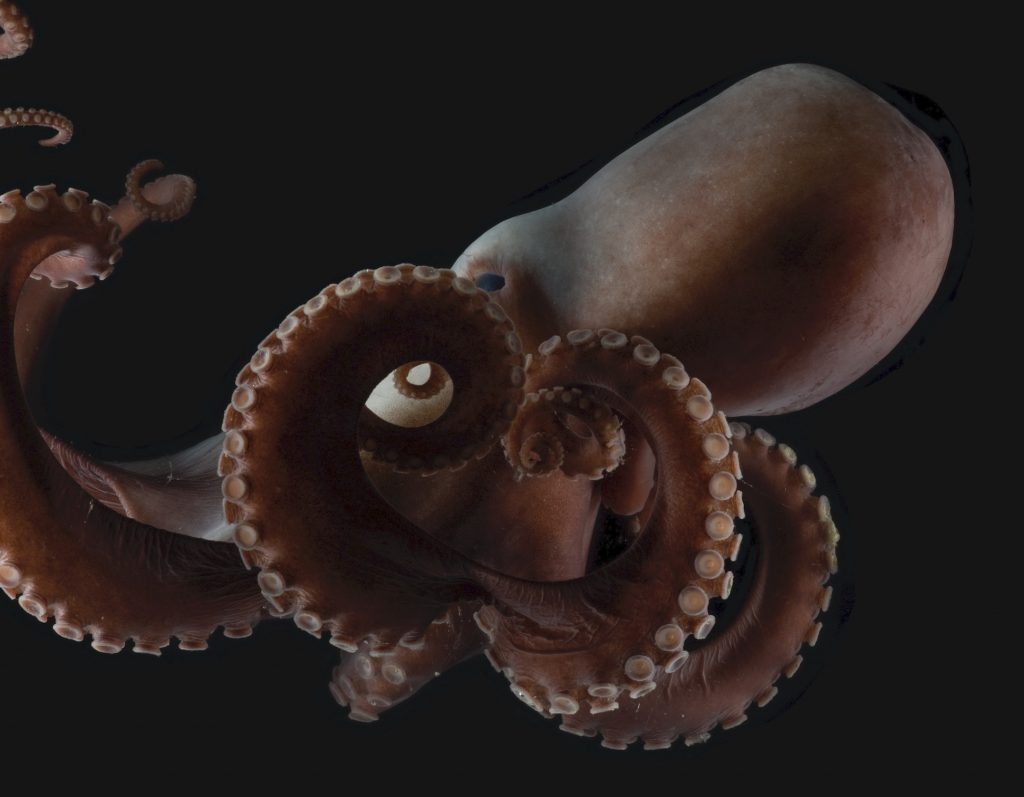Bringing Out the Dead

One bright morning in November 2018, state biologists in Louisiana loaded three dead and toothy alligators, each more than 5 feet long and weighing hundreds of pounds, into the back of a pickup. The biologists bumped along Louisiana State Route 56, driving the carcasses as far south as one can go before plunging into the marsh at the outer mouth of the Mississippi River.
Waiting at the end of the road was Craig McClain, a tall, bald, and bearded marine biologist who studies how living things get food at the bottom of the ocean. McClain leads a coastal research institute called the Louisiana Universities Marine Consortium, or LUMCON, that explores life at the interface of land and sea. Its main building hovers over the wetlands on big concrete pilings, driven deep into the muck.
Coastal Louisiana teems with alligators (Alligator mississippiensis)—more than a million of them. They sit, mouths agape, on riverbanks and roadsides; they’re crushed by cars; they swim in canals and bask in the sun on nearby barrier islands. McClain can look out the window at work and sometimes see them swim by. He wondered: What happens when they die? If they died at sea, or were washed out, might they provide food to the strange things that dwell in the depths of the Gulf of Mexico? Are they an important part of deep-sea energy cycles? He conjured up a plan to find out, but to carry it out, he would need dead alligators.
When big alligators threaten pets, livestock, or humans—charging, biting, eating—the Louisiana Department of Wildlife and Fisheries considers them “nuisance animals,” and sends out hunters to remove them. In October 2018, McClain had asked the department if they could provide him with a few dead gators for an unusual research project. That November morning, he’d gotten the call.
“They said, ‘hey, we have three alligators for you. Are you prepared for them?’” McClain says.
McClain’s group unloaded the alligators, wrapped them in thick plastic sheets, and stashed them in a large freezer. They stayed there until February 2019, when the biologists transferred the alligators into another freezer on board the R/V Pelican, LUMCON’s 116-foot research vessel, which houses four laboratories and can support 14 scientists for up to three weeks at sea. McClain’s plan was to motor out into the Gulf to sink the alligators at various ocean locations and depths, to study what happens to their carcasses—a kind of crocodilian burial at sea.
The idea driving the experiment was simple: If you feed them, they will come. In this case, “they” were the scavengers that float, swim, burrow, and crawl in the muck at the bottom of the Gulf of Mexico. These scavengers can’t live without food, but because plants and phytoplankton cannot grow in the deepest ocean where there is no light, biologists believe that the organisms found there largely subsist on “food falls” that drift down in the form of kelp or dead fish and other animals. McClain suspected that decomposing alligators might play a role in feeding the invertebrates that dwell at the bottom of the Gulf of Mexico. Understanding the fate of dead creatures—like alligators—on the seafloor would help to fill gaps in knowledge about both the food chain and the carbon cycle in the ocean depths.

McClain’s group was the first in the world, as far as he knows, to sink dead reptiles for research—but not the first to study sunken carrion in the sea. In recent years, biologists have sunk whale carcasses, turkeys, shark craniums, pig carcasses, fish bones, and cow bones—in waters deep and shallow, warm and cold, from California to the Mediterranean, Japan to Antarctica—in order to draw out the exotic scavengers that hide in the deepest ocean and can’t be studied in any other way. “It’s mind-boggling,” says McClain. “You can be two or three kilometers deep, and there’s this whole set of animals that are just made to eat whatever carbon comes down.”
Read more at bioGraphic magazine.
Photo by David Shale for bioGraphic
